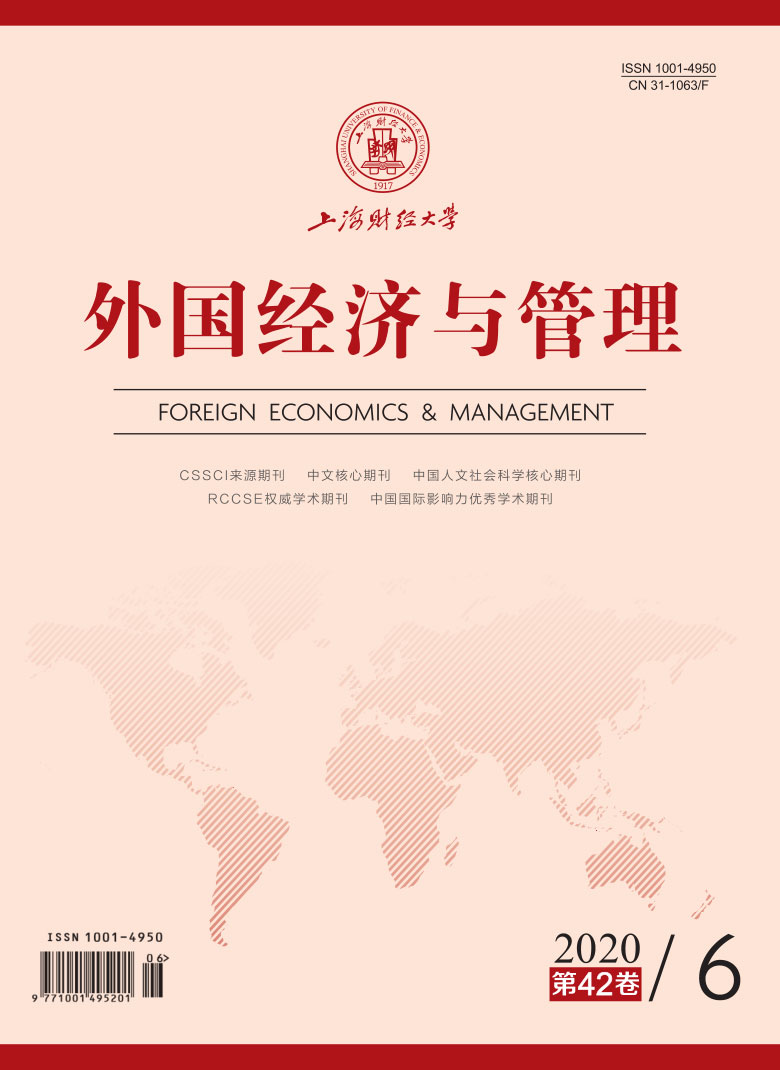近年来,企业能力理论已经成为创业研究焦点之一,同时学者们也逐渐开始探索新创企业中惯例的形成及其与能力的关系问题,然而多数学者仅在单一的层级上对惯例及其与能力的关系进行研究,关于新创企业惯例形成的过程及其与能力的关系机制尚未得到有效揭示。本文系统梳理了国内外最新文献后,对企业惯例与能力进行概念界定,构建了企业惯例层级模型,将企业惯例划分成单个惯例、惯例集群、组织惯例三个层级,刻画了新创企业的惯例形成过程。然后基于企业能力层级理论,对企业惯例中各层级与企业能力之间的关系进行辨析,最后提出新创企业惯例与能力之间作用机理模型。该模型指出新创企业先形成单个惯例再通过绑聚形成惯例集群进而形成运营能力,当环境变化时,企业通过将运营能力与资源整合形成应对变化的动态能力进而修改单个惯例使得惯例更新。本研究深入剖析企业惯例与能力之间的关系,一方面为后续的实证研究奠定了理论基础,另一方面更为新创企业的存活提供了切实有效的理论指导。
新创企业惯例形成过程与能力关系的机制研究
摘要
参考文献
1 高洋, 葛宝山, 蒋大可. 组织学习、惯例更新与竞争优势之间的关系——基于不同环境不确定水平的研究[J]. 科学学研究,2017, (9): 1386-1395. DOI:10.3969/j.issn.1003-2053.2017.09.013
8 徐萌, 蔡莉. 新企业组织学习对惯例的影响研究——组织结构的调节作用[J]. 管理科学,2016, (6): 93-105. DOI:10.3969/j.issn.1672-0334.2016.06.008
10 Abell P, Felin T, Foss N. Building micro-foundations for the routines, capabilities, and performance links[J]. Managerial and Decision Economics,2008, 29(6): 489-502. DOI:10.1002/mde.1413
12 Augier M, Teece D J. Dynamic capabilities and the role of managers in business strategy and economic performance[J]. Organization Science,2009, 20(2): 410-421. DOI:10.1287/orsc.1090.0424
13 Bapuji H, Hora M, Saeed A M. Intentions, intermediaries, and interaction: Examining the emergence of routines[J]. Journal of Management Studies,2012, 49(8): 1586-1607. DOI:10.1111/j.1467-6486.2012.01063.x
14 Barrales-Molina V, Bustinza Ó F, Gutiérrez-Gutiérrez L J. Explaining the causes and effects of dynamic capabilities generation: A multiple-indicator multiple-cause modelling approach[J]. British Journal of Management,2013, 24(4): 571-591. DOI:10.1111/j.1467-8551.2012.00829.x
15 D’Adderio L, Feldman M S, Lazaric N, et al. Call for papers-special issue on routine dynamics: Exploring sources of stability and change in organizations[J]. Organization Science,2012, 23(6): 1782-1783. DOI:10.1287/orsc.1120.0800
16 Davies A, Frederiksen L, Cacciatori E, et al. The long and winding road: Routine creation and replication in multi-site organizations[J]. Research Policy,2018, 47(8): 1403-1417. DOI:10.1016/j.respol.2018.04.016
17 Day M, Lichtenstein S, Samouel P. Supply management capabilities, routine bundles and their impact on firm performance[J]. International Journal of Production Economics,2015, 164: 1-13. DOI:10.1016/j.ijpe.2015.02.023
18 Dittrich K, Guerard S, Seidl D. Talking about routines: The role of reflective talk in routine change[J]. Organization Science,2016, 27(3): 678-697. DOI:10.1287/orsc.2015.1024
19 Dittrich K, Seidl D. Emerging intentionality in routine dynamics: A pragmatist view[J]. Academy of Management Journal,2018, 61(1): 111-138. DOI:10.5465/amj.2015.0010
20 Feldman M S, Pentland B T. Reconceptualizing organizational routines as a source of flexibility and change[J]. Administrative Science Quarterly,2003, 48(1): 94-118. DOI:10.2307/3556620
21 Felin T, Foss N J. The endogenous origins of experience, routines, and organizational capabilities: The poverty of stimulus[J]. Journal of Institutional Economics,2011, 7(2): 231-256. DOI:10.1017/S1744137410000214
22 Felin T, Foss N J, Heimeriks K H, et al. Microfoundations of routines and capabilities: Individuals, processes, and structure[J]. Journal of Management Studies,2012, 49(8): 1351-1374. DOI:10.1111/j.1467-6486.2012.01052.x
23 Heimeriks K H, Schijven M, Gates S. Manifestations of higher-order routines: The underlying mechanisms of deliberate learning in the context of postacquisition integration[J]. Academy of Management Journal,2012, 55(3): 703-726. DOI:10.5465/amj.2009.0572
24 Helfat C E, Winter S G. Untangling dynamic and operational capabilities: Strategy for the (N)ever-changing world[J]. Strategic Management Journal,2011, 32(11): 1243-1250. DOI:10.1002/smj.955
25 Hilliard R, Goldstein D. Identifying and measuring dynamic capability using search routines[J]. Strategic Organization,2019, 17(2): 210-240. DOI:10.1177/1476127018755001
26 Hitt M A, Li D, Xu K. International strategy: From local to global and beyond[J]. Journal of World Business,2016, 51(1): 58-73. DOI:10.1016/j.jwb.2015.08.016
27 Jiang W, Mavondo F T, Matanda M J. Integrative capability for successful partnering: A critical dynamic capability[J]. Management Decision,2015, 53(6): 1184-1202. DOI:10.1108/MD-04-2014-0178
28 Kortmann S, Gelhard C, Zimmermann C, et al. Linking strategic flexibility and operational efficiency: The mediating role of ambidextrous operational capabilities[J]. Journal of Operations Management,2014, 32(7-8): 475-490. DOI:10.1016/j.jom.2014.09.007
29 Kremser W, Schreyögg G. The dynamics of interrelated routines: Introducing the cluster level[J]. Organization Science,2016, 27(3): 698-721. DOI:10.1287/orsc.2015.1042
30 Li D Y, Liu J. Dynamic capabilities, environmental dynamism, and competitive advantage: Evidence from China[J]. Journal of Business Research,2014, 67(1): 2793-2799. DOI:10.1016/j.jbusres.2012.08.007
31 Lin H F, Murphree M, Li S L. Emergence of organizational routines in entrepreneurial ventures[J]. Chinese Management Studies,2017, 11(3): 498-519. DOI:10.1108/CMS-05-2017-0130
32 Mariano S, Casey A. The dynamics of organizational routines in a startup: The ereda model[J]. European Management Review,2016, 13(4): 251-274. DOI:10.1111/emre.12080
33 Nigam A, Huising R, Golden B. Explaining the selection of routines for change during organizational search[J]. Administrative Science Quarterly,2016, 61(4): 551-583. DOI:10.1177/0001839216653712
34 Pavlou P A, El Sawy O A. The “third hand”: IT-enabled competitive advantage in turbulence through improvisational capabilities[J]. Information Systems Research,2010, 21(3): 443-471. DOI:10.1287/isre.1100.0280
35 Pentland B T, Feldman M S, Becker M C, et al. Dynamics of organizational routines: A generative model[J]. Journal of Management Studies,2012, 49(8): 1484-1508. DOI:10.1111/j.1467-6486.2012.01064.x
36 Pentland B T, Hærem T, Hillison D. Comparing organizational routines as recurrent patterns of action[J]. Organization Studies,2010, 31(7): 917-940. DOI:10.1177/0170840610373200
37 Pentland B T, Hærem T, Hillison D. The (N)ever-changing world: Stability and change in organizational routines[J]. Organization Science,2011, 22(6): 1369-1383. DOI:10.1287/orsc.1110.0624
38 Rerup C, Feldman M S. Routines as a source of change in organizational schemata: The role of trial-and-error learning[J]. Academy of Management Journal,2011, 54(3): 577-610. DOI:10.5465/amj.2011.61968107
39 Stańczyk-Hugiet E, Piórkowska K, Stańczyk S. Demystifying emergence of organizational routines[J]. Journal of Organizational Change Management,2017, 30(4): 525-547. DOI:10.1108/JOCM-03-2016-0048
40 Salvato C, Rerup C. Beyond collective entities: Multilevel research on organizational routines and capabilities[J]. Journal of Management,2011, 37(2): 468-490. DOI:10.1177/0149206310371691
41 Teece D, Peteraf M, Leih S. Dynamic capabilities and organizational agility: Risk, uncertainty, and strategy in the innovation economy[J]. California Management Review,2016, 58(4): 13-35. DOI:10.1525/cmr.2016.58.4.13
42 Teece D J. Dynamic capabilities: Routines versus entrepreneurial action[J]. Journal of Management Studies,2012, 49(8): 1395-1401. DOI:10.1111/j.1467-6486.2012.01080.x
43 Teece D J. The foundations of enterprise performance: Dynamic and ordinary capabilities in an (economic) theory of firms[J]. Academy of Management Perspectives,2014, 28(4): 328-352. DOI:10.5465/amp.2013.0116
44 Vanpoucke E, Vereecke A, Wetzels M. Developing supplier integration capabilities for sustainable competitive advantage: A dynamic capabilities approach[J]. Journal of Operations Management,2014, 32(7-8): 446-461. DOI:10.1016/j.jom.2014.09.004
45 Vera D, Nemanich L, Vélez-Castrillón S, et al. Knowledge-based and contextual factors associated with R&D teams’ improvisation capability[J]. Journal of Management,2016, 42(7): 1874-1903. DOI:10.1177/0149206314530168
46 Vromen J J. Routines as multilevel mechanisms[J]. Journal of Institutional Economics,2011, 7(2): 175-196. DOI:10.1017/S1744137410000160
47 Wang C L, Senaratne C, Rafiq M. Success traps, dynamic capabilities and firm performance[J]. British Journal of Management,2015, 26(1): 26-44. DOI:10.1111/1467-8551.12066
48 Witt U. Emergence and functionality of organizational routines: An individualistic approach[J]. Journal of Institutional Economics,2011, 7(2): 157-174. DOI:10.1017/S1744137410000226
49 Wilhelm H, Schlömer M, Maurer I. How dynamic capabilities affect the effectiveness and efficiency of operating routines under high and low levels of environmental dynamism[J]. British Journal of Management,2015, 26(2): 327-345. DOI:10.1111/1467-8551.12085
50 Zahra S A, Wright M, Abdelgawad S G. Contextualization and the advancement of entrepreneurship research[J]. International Small Business Journal: Researching Entrepreneurship,2014, 32(5): 479-500. DOI:10.1177/0266242613519807
引用本文
马鸿佳, 张弼弘, 唐思思. 新创企业惯例形成过程与能力关系的机制研究[J]. 外国经济与管理, 2020, 42(6): 55-68.
导出参考文献,格式为:






 9255
9255  6873
6873

